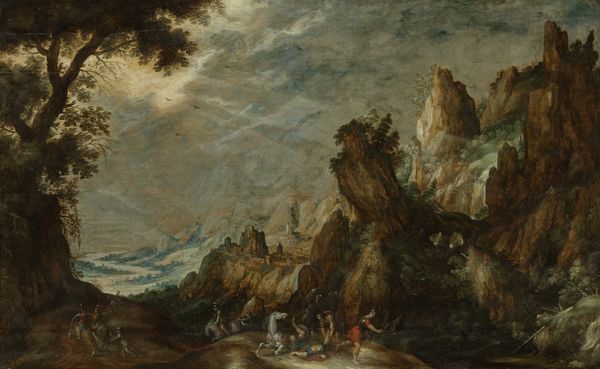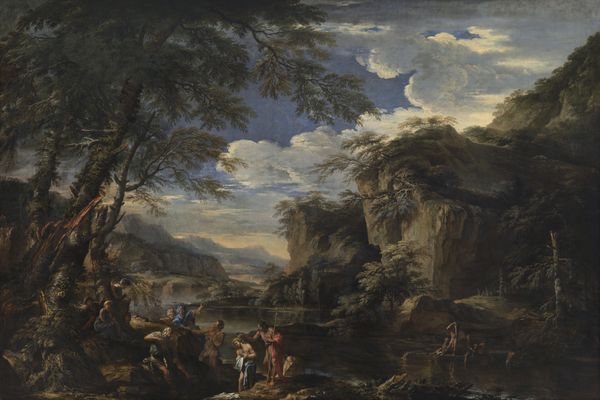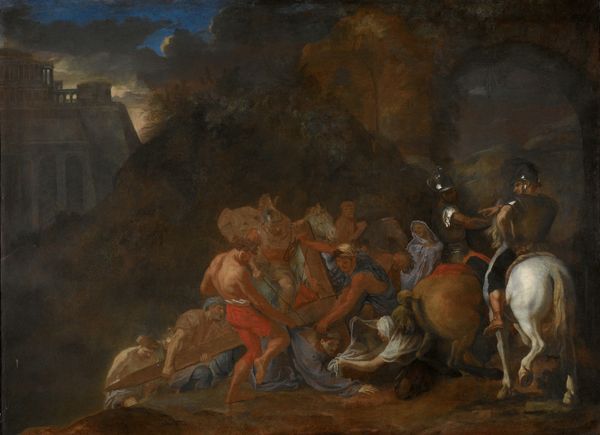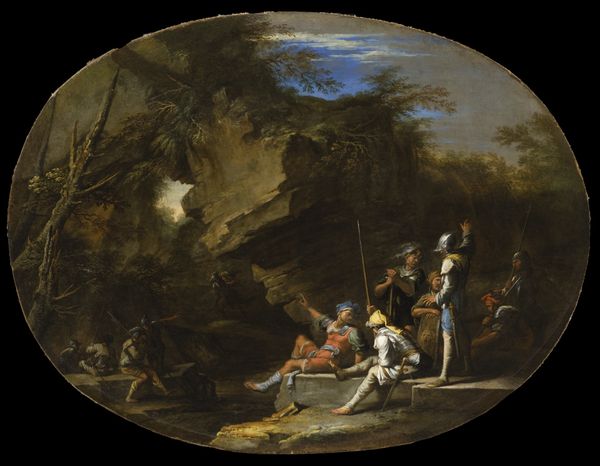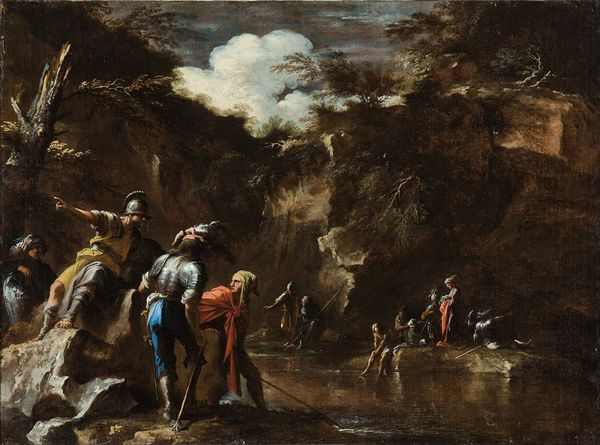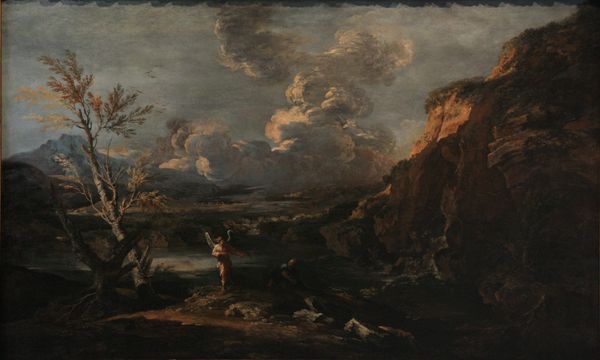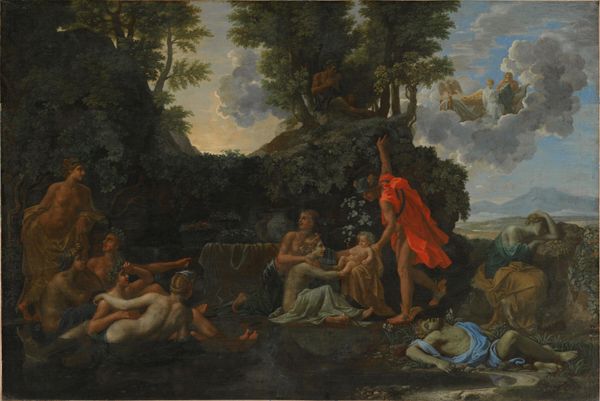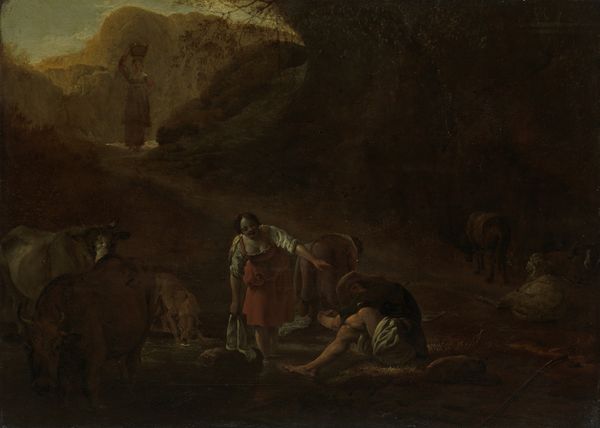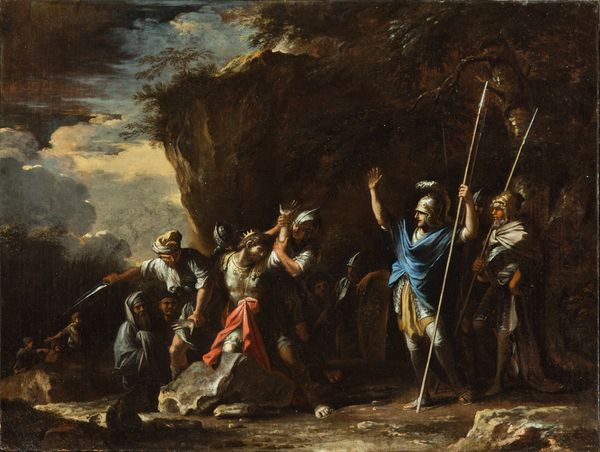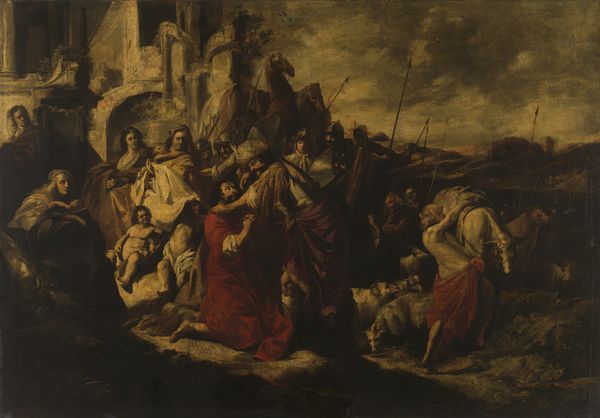
oil-paint
#
baroque
#
oil-paint
#
landscape
#
oil painting
#
mythology
#
history-painting
#
italian-renaissance
Copyright: Public domain
Editor: This is Adam Elsheimer's "St. Paul at Malta," painted around 1600. It's an oil painting, and it feels so dramatic! All that dark and then bursts of light, it really captures your eye, and creates such an atmospheric composition. How do you interpret this work? Curator: I focus on the interplay of light and shadow. Notice how the artist employs a tenebrist style, common during the Baroque period. The intense contrast enhances the emotional weight and focuses the viewer’s attention. Editor: So it's the light that gives the piece its punch. Curator: Precisely. It not only illuminates key figures but also structures the composition. Note how the diagonal shafts of light intersect with the horizontal wave patterns, creating visual tension and movement. What do you make of the figures themselves? Editor: They seem to be huddled together on the beach. Is that supposed to be the moment after the shipwreck? I hadn't considered the way the human figures create contrast. Curator: Indeed. Elsheimer's rendering emphasizes the collective experience through varied poses and gestures, set against the imposing power of the natural elements. Also note the surface texture, and how his visible brushwork conveys movement and tension throughout the composition. Editor: Now I see the way the brushstrokes mirror the water. This painting is about so much more than its subject— it’s a sophisticated exploration of light, shadow, and texture. Thanks for making me look closer. Curator: My pleasure. Focusing on these structural elements allows for a richer aesthetic experience beyond a mere narrative interpretation.
Comments
No comments
Be the first to comment and join the conversation on the ultimate creative platform.
